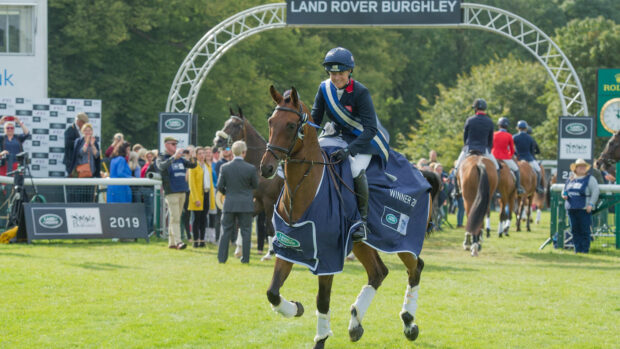Eventing legend Ginny Elliot explains how your body shape will influence your cross-country seat
Event riders come in all shapes and sizes — the trick is to find a way of making your shape work for you.
Tall riders such as Mark Todd (pictured) and William Fox-Pitt have more weight to keep in balance but the advantage of long legs to anchor that weight in the correct place. Shorter people, like Pippa Funnell and me, have worked for years to find enough strength in our hips to keep ourselves behind the movement.
The essence of cross-country riding is to find your centre of balance, whatever your height, weight, strength or shape. Weight distribution is one of the most important factors because it either goes for the horse or against.
Most cross-country faults are caused by the weight from hip to head being in the wrong place, particularly on the last stride prior to take-off.
If you are fairly short, the considered advice is to keep your upper body vertical on the approach to the fence so that you don’t get in front of the movement. That’s fine in theory, but the reality is that it’s hard to maintain that vertical position and some riders flop forward, sending the principle out of the window. But many riders adopt this style, as I did, disciplining themselves not to shift their weight forward.
The other camp, mostly the tall lot, will approach with the upper body slightly forward and, at the last minute, straighten so that they are almost leaning back.
Both methods work, as long as at the last stride the rider sits up and away from the horse’s shoulder, so that their body weight doesn’t interfere with the horse’s jumping technique.
The demands of position and balance, and ability to achieve the right canter at the right speed, have remained the same throughout cross-country history, despite developments in course-design.
Now, though, the extra demands in accuracy of approach has meant that today’s riders have become tecnicians, a factor that has forced many to adopt a tidier, more organised and less instinctive style.
Praise for Pippa
Perhaps the most dramatically changed rider I’ve seen, through an amazing example of guts and hard work, is Pippa Funnell. Pippa is tiny and had to learn to drive the horse from the hip as she doesn’t have the long legs to get around the horse.
In the early days, Pippa rode a mixture of very big and small, ponyish horses. This in itself make for a difficult adjustment — to different speeds, type of jump, stide and so on. Like myself in the early days, Pippa’s lower leg was too far back. This causes the rider to grip with the knee so that it acts like a pivot, loosening the upper body and causing a “clothes peg” action that tips the rider forwards.
Curing this leg/balance problem can only be done through hard work and discipline. I’ve never seen anyone work so hard at control of the lower leg, making sure she didn’t get in front of the horse on the last strides of the approach.
You never see Pippa in the wrong place now; she has achieved perfection in her cross-country seat.
As told to Kate Green
This feature was first published in 11 November ’04 issue of Horse & Hound. To purchase a back issue (tel: 01733 385170)



